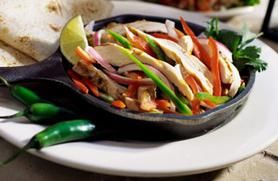We've all seen examples or heard stories about Grandma's cast iron cookware that's been in regular use since the Eisenhower administration or before. Long before nonstick pans (made with perfluorooctanoic Acid-or PFOA-which is a known carcinogen...yum!) became popular, cast iron provided the original nonstick cooking surface, and we've got news for you: it still works! While new nonstick pans' ability to repel sticky foods fades over time (often just a year or two), a well-seasoned cast iron pan will only get better with age, and will last you for a lifetime.
This ultimate longevity is what makes cast iron such a great, green addition to any kitchen (or a great, green cooking option, if you've already got one or more). Imagine never having to replace your cookware again. Ever. While they do require a bit more maintenance than their chemically-enhanced counterparts, it's absolutely worth your while to have a pan or set of pans that will perform at a high level, under a multitude of kitchen scenarios, for you, and, eventually, your kids, and even their kids, too.
Advertisement
The first thing you have to do when you get a new pan is "season" it. Here's how:
1. Wash your new pan in hot, soapy water. This is the only time you'll use soap when washing cast iron, so don't get used to it. Rinse the pan and dry completely. Don't worry, a little discoloration on towel is normal.
2. Apply a thin, even coating of vegetable oil or melted shortening-do not use butter or butter flavored shortening-to the pan with a soft cloth or paper towel. Apply the oil inside and outside. If your utensil has a lid, make sure you season it, as well.
3. Preheat your oven to 350°F. Put the pan on top shelf, upside down. Place some aluminum foil on a baking sheet and put that on the bottom shelf of the oven to catch any drippings. Bake the pan (and lid, if you've got one) in the oven for one hour, then turn the oven off and leave the pan in there until it's cool.
Congratulations! Your pan is now seasoned and ready for use. But it doesn't stop there; you have to give your cookware a little lovin' after each time that you use it. To clean your cookware, after use, use hot water and a plastic (not metal, because it'll scratch off the seasoning ) scrub bun or brush, and clean it while the pan is still hot (but not too hot to touch).
Tip: Do not use soap, unless you are going to repeat the seasoning process, and, whatever you do, don't put it in dishwasher.
After washing it, dry it thoroughly, then spray lightly with vegetable oil (like your own nonstick cooking spray, wipe with a paper towel, and store. Don't store your pan with its lid on, as cast iron needs to breathe, and condensing moisture inside of it can counteract all your hard work seasoning the pan. Some people also like to heat it back up on the stove after washing-and before applying the vegetable oil-as a mini re-seasoning step.
Advertisement
